Traditional
Matryoshka – The Russian Nesting Doll
It's hard to find a symbol of Russia more popular than the traditional Russian nesting doll. These decorated wooden dolls "with a secret" are also calledmatryoshka dolls or babushka dolls. They are recognized even in the countries thousand miles away from Russia. Taking a Russian nesting doll back home is a must among tourists from Europe and the United States alike. The lovers of exotics collect matryoshkas in Australia and South Africa. The simplicity and originality of matryoshka dolls attract the fans of Russian folk art from around the world. Bright and picturesque Russian nesting dolls decorate the fireplaces and bookshelves in the homes of thousands of Russians.
The history of Russian nesting dolls
Some historians of Russian life argue that matryoshka dolls originated from Japanese traditional dolls. However it's known that Russian masters would make hollow detachable Easter eggs from the wood long before the first nesting doll was made. The first Russian nesting doll set appeared in Moscow in 1890's. It was carved by Vasily Zvyozdochkin from a design by a folk crafts painter Sergey Malyutin. The doll set consisted of eight dolls of decreasing sizes placed one inside the other. All eight dolls depicted children -- the outermost was a girl holding a rooster, six inner dolls were girls, the fifth doll was a boy, and the innermost was a baby.
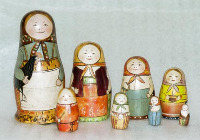
Despite the fact that first matryoshka dolls were intended for children, their price was so high that only adults could afford to buy them on special occasions. Matryoshka dolls were often given as a present to young women from their beloved ones. In 1900, the dolls earned a bronze medal at the World Exhibition in Paris. Soon after, Russian nesting dolls became wildly popular. The toys were being produced in several well-known manufacturing centers, the most famous of them being Sergiev Posad and Semenov. In the early twentieth century, Russian nesting dolls were being exported abroad in large quantities. The popularity of the dolls even gave rise to a few companies in Germany which produced counterfeit nesting dolls and sold them as Russian toys.
How are Russian nesting dolls made?
It takes a lot of skill to make a Russian nesting doll set. Traditionally, matryoshka dolls were made from linden or birch and their production would involve the participation of the whole family. The dolls of the cylindrical form were painted in different ways: it could be a peasant girl dressed in a sarafan and a headscarf, a man or a child. Matryoshka dolls are often painted holding a basket of berries, bread, or a bunch of flowers in their hands.
The production process would begin with the smallest, innermost doll that was lathed from a single piece of wood and wouldn't separate as opposed to the larger figures. The number of nested dolls in a set could vary from two to sixty however a classic set normally included five nested figures. The carved dolls were covered with special glue to fill the cracks and reduce the roughness, after which the dolls were painted to follow a particular theme.

Photo by Brandt Luke Zorn CC-SA2.0
Today, the same process is used in for hand-made nesting dolls some Russian villages. The nesting dolls can be painted to follow the traditional theme or any other style, including fairy tales characters, animals, famous political leaders, historical figures, musicians and popular movie stars.
A fancy set like that might make a good gift. When in Russia, you can purchase Russian nesting dolls at most places where souvenirs are sold. In Moscow, Izmaylovo Market is an excellent souvenir venue where hundreds of vendors offer myriads of gifts for sale. It's a good idea to reserve a hotel in Moscow and dedicate a full day to shopping at the market.
Russian nesting dolls: Record-breakers
In 1913, a factory in the city of Semyonov produced a matryoshka dolls set that consisted of 48 figures and was painted in traditional red and yellow colors.
In the meantime, the biggest Russian dolls set was presented at the exhibition in Japan in 1970. Russian masters from Semenov showcased a matryoshka set that included seventy-two figures. The production of such matryoshkas requires exceptional skills and talent, so their mass production is not possible.
Russian Hospitality
There is a big difference between the Russian tradition of hospitality and a friendly attitude towards guests in other countries of the world. The legends about the breadth of the Russian soulhave a very good reason to exist. Russians love to accept guests and make great hosts. When in Russia, you don't need to wait for a special occasion like a birthday or a holiday to visit a friend or a neighbor. Russians like visiting each other, meeting in friendly companies for dinner, or just stopping by to catch up on what's going on. The latter is called "to drop in for a cup of coffee" (забежать на чашечку кофе).
Do I need an invitation?
Russians often visit each other's homes without a special invitation. Just let the hosts know about your plans in advance and they'll be very happy to accept you. It is considered rude to leave guests without a treat. A host may offer the guest a cup of tea with cookies or set the table with snacks and serve cocktails—everything depends on the company, the time of the day, and the financial well-being of the host. In the least, you will always be offered something to eat or drink when visiting Russians at their homes.
Gifts for the Hosts
Just like it would be rude to leave a guest without a treat, it is considered rude to make a visit without a gift for the hosts. Russians even have an expression "придти с пустыми руками" that literally means "to come with empty hands". It is used to describe guests who didn't bring any gifts to the hosts. You don't have to buy expensive souvenirs when being a guest. A box of chocolates or a bottle of fine wine will make a good gift. If you are visiting a family with children make sure to bring a treat for the kids—a candy, a chocolate bar or fruits.
Theme parties
A good way to get together with friends is to organize a "theme" party. Theme parties are quickly gaining popularity among young Russians. For example, the increasing number of Russians are becoming interested in Japanese cuisine. A company of friends may choose to organize a sushi night at someone's house and order sushi delivery or make their own sushi rolls. Other Russians like to meet up for beers ("на пиво") which usually involves boiling shrimp or crawfish and tasting different types of beer while watching a movie or a soccer game in a company of friends.
Holiday Celebrations
Russians like to serve a festive dinner for the guests on occasion of such holidays as birthdays, New Year and Easter. The necessary attributes of a holiday dinner include meat and cold appetizers (jellied minced meat known as "kholodets" is very common), one or more hot dishes, and cake for dessert. Russian housewives prefer to cook everything themselves and it is expected that a real Russian woman should be a good cook. Alcohol is another important attribute of a holiday dinner. Russians do not usually follow the habits of serving wine with meat dishes or hard liquor with dessert. Instead, all types of alcoholic beverages are served on the table and guests may pick their favorites themselves.
Foreigners and visitors from other cities
Russians display special generosity and goodwill to guests from other cities and countries. A real Russian is more than happy to accommodate a new guest in his or her house instead of reserving a hotel room for the guest. Many Russians who live in small apartments and don't have an opportunity to accommodate a guest will feel very upset about that. If you are visiting Russia and staying with a Russian friend, they will be very pleased to show you around, accompany you during sightseeing, and guide you to the most interesting places in their city.
Russian Banya

Banya (a Russian type of sauna, a kind of steam bath) is one of the oldest Russian traditions. Despite the fact that this tradition is several centuries old, the banya is popular even today. You can find banyas in large cities and small towns. Usually those Russians who have summer cottages, almost always build their own banya there.
How a Russian banya is set up
A Russian banya (ба́ня) has a special room, where a large amount of hot steam is created with the help of water and hot air. A classic Russian banya is heated with firewood, but modern versions might use electric heat as well. Inside the banya, which is usually built of wood, there are wide wooden benches along the walls. They are built up one above the other like steps. You can sit or lay on the benches. The higher up the bench the hotter the air is. Once someone has warmed up well enough, he or she leaves the steam room (it is called the парна́я in Russian) and dips into a pool of cold water. You can also pour water over yourself from a tub (уша́т), while in Siberia it's common to walk right out of the steam room and jump into the snow.
What do you need a venik in the banya for?

At Russian banya there are special bath brooms (ве́ник) that are used. These brooms or veniks are bundles of twigs and leafy branches bound together from some kind of tree—usually they are from birch or oak trees. The veniks are dipped into cold water and then smacked briskly all over the body. There is a special person who is responsible for this, called banschik (ба́нщик). But usually people don't need banschik's help because groups of friends typically go together and are able to smack each other with veniks.
Banya is a place for communication

Friends go to the banya with a special purpose in mind. It’s considered that the banya atmosphere brings people closer together, allows them to communicate and interact on a more common level. Russians don't spend all their time in the parnaya (парна́яis a room with hot wet steam). During a break they walk out to another room which is called predbannik (предба́нник is a room before the steam room). Usually, that room has a large long table and a few benches. In the predbannik, people take a break from the hot temperature and relax, drink aroma tea or special herbal tea, have conversations about life and share their ideas or beliefs to each other.
Russian proverbs about the banya
Russians have lots of proverbs and sayings about banya. Here are a few of them in Russian and English:
Ба́ня здоровит, разгово́р весели́т.
The banya makes you healthy, it stimulates conversation.
The banya makes you healthy, it stimulates conversation.
Ба́ня - мать втора́я.
The banya is like a second mother.
The banya is like a second mother.
В ба́не помы́лся — за́ново роди́лся.
Washing up in the banya is like being born again.
Washing up in the banya is like being born again.
Вы́лечился Ва́ня — помогла́ ему́ ба́ня.
Vanya has recovered from sicknesses - thanks to the banya.
Vanya has recovered from sicknesses - thanks to the banya.
Приста́л, как ба́нный лист!
Stuck like a limpet! (literally: Stuck like a banya's leaf.)
Stuck like a limpet! (literally: Stuck like a banya's leaf.)
В ба́не ве́ник доро́же де́нег.
A bath-broom in the banya is worth more than money.
A bath-broom in the banya is worth more than money.
Benefits of Russian banya
The benefits of the banya have been known for a long time. Hot steam (пар) helps clean the skin, makes it soft and smooth. The Russian banya helps fight sicknesses — harmful elements are removed from the body thanks to the bath-brooms (ве́ники) and hot steam. Overweight women who want to lose weight are recommended to go to the banya once a week. And there is a reason for another Russian proverb which refers to the banya's health benefit, "The day you spend in the banya is the day you do not age." (В кото́рый день па́ришься, тот день не ста́ришься.)
Russian Banya Vocabulary
ба́ня - banya (Russian sauna and steam bath)
парна́я - a steam room
ве́ник - a bath-broom (bunches of dried or fresh branches and leaves)
уша́т - tub
предба́нник - the entrance room
ба́нщик - a banya's service person
пар - steam
вода́ - water
здоро́вье - health
парна́я - a steam room
ве́ник - a bath-broom (bunches of dried or fresh branches and leaves)
уша́т - tub
предба́нник - the entrance room
ба́нщик - a banya's service person
пар - steam
вода́ - water
здоро́вье - health
Russian Samovars
Samovars and tea-drinking are an indispensable element of Russian culture. In modern Russia, samovars are rarely used to boil water for tea as originally intended, however many families place samovars in the center of the table during holiday celebrations. Reserving pride of place for a samovar at the festive table is both a tribute that Russians give to their ancestors and a ceremony that embodies warm-hearted hospitality.
What is a Samovar?
A samovar is a device traditionally used to heat and boil water for tea. The word samovar in Russian is derived from "сам" meaning self and "варить" meaning to boil. The name can be loosely translated into English as "self-boiler". Samovars are made from metal and consist of a large urn-shaped container and a metal pipe running vertically through the middle. To boil the water inside a samovar, the pipe is filled with solid fuel such as pine cones, charcoals and wood chips which are set on fire. A small tea pot is used to brew a tea concentrate. The tea pot is often placed on top of a samovar to keep it heated with the passing hot air.
The tea is served by pouring tea concentrate into a cup and diluting it with boiled water. The water is released through a faucet at the base of the metal container. Samovars were one of the earliest home appliances in Russia. Families and guests would sit at a large dinner table to have a leisurely talk and discuss the latest events while drinking hot tea.
What is a Samovar singing about?
Russian people believed that the samovar has a soul. This belief was mainly based on the fact that samovars were producing different sounds when being heated with fuel. The shape of the samovar's body accounts for amazing acoustics and water makes peculiar noises when it is being brought to the boil. It was common to say that "a samovar is singing" (самовар поёт).
Who invented a Samovar?
The oldest pottery samovar-like was found in Azerbaijan. Its age was 3700 years, which is about 1700 older than a samovar discovered in Egypt. There were similar devices found in China but they weren't used for making tea.
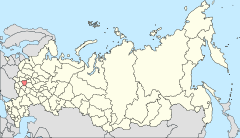
In Russia, the first copper samovar was made in 1778 by the Lisitsyn brothers in Tula, a city known for its metalworkers and arms-makers. Within the first 70 years, numerous samovar-makers in Tula were producing 120 thousand samovars every year. Samovars were mainly made from nickel and copper and particular attention was paid to details. The handles and the faucet could be made in the form of vines or the claws of a dragon, while the body of the samovar could be engraved by hand.
The samovar manufacturing process consisted of 12 stages with individual masters specializing on each stage of production. Interestingly, the population of the whole village could be specializing on manufacturing of a single element, such as the handles of the samovar. The final assembly and trimming of samovars was performed at factories. By the early twentieth century there were about 170 different models of samovars. Samovars were sold by weight—the heavier the samovar the higher the price.
Samovar proverbs
Today, Tula is known as the historical center of samovar production. There is a Russian proverb В Ту́лу со свои́м самова́ром не е́здят, which means "You don't take a samovar to Tula". It is used in the same sense as "to bring coals to Newcastle".
Samovars in modern Russia
Modern factories produce both antique and electric samovars. The traditional models are mostly purchased as souvenirs. The electric samovars use an electric heating element instead of the fuel pipe. Electric samovars serve the same purpose as the electric kettle and can be easily used in any household in Russia.
If you are going to buy a samovar made in Russia to bring back to your country, remember that Russian samovars are made according to the Russian electric standards. Russia has 220 volt electricity and a different electric plug. You will need to consult with the manufacturer about possibility of using such a samovar in your country. Whether you use it to boil water or not, a Russian samovar will always make a great souvenir or a home decor element.
Today, there are several museums dedicated to the "Russian tea machine". The most famous museum is Mikhail Borschev's private collection of more than 400 samovars. If you'd like to further explore the wonders of Russian folk arts you can visit the online samovar museum athttp://www.samovaroff.net/ (the site is available in Russian only).
Family and Marriage
The Russian Family and Marriage
Russian families are large and friendly. The meaning of the family in Russia is not limited to the husband, wife and children. It stretches to include grandparents, aunts and uncles, brothers, sisters, nephews and nieces. The members of the Russian family closely communicate with each other and frequently get together, especially on such family occasions as birthdays and anniversaries. Just like in any family, there might be misunderstandings and even quarrels among family members, however one thing is certain: Russians cherish their families and are always ready to help their relatives in difficult times. The tradition that everyone should love their own home and protect their family is instilled into Russians since the early childhood.
Husband, Wife, and Age Differences
Just a few decades ago, it was very common among Russians to play the wedding at an early age. Young men and women would get married at the age of 18-20 while studying in their second or third year at the university. A typical student family (студенческая семья) would consist of a young husband and wife pursuing their university degrees while receiving material support from their parents.

According to the latest statistics, the marriages between Russians of the same age are much less common. In the majority of Russian families, the husband is 4-6 years older than his wife but the age difference of more than 10 years is still acceptable by most Russians (for example, the lead singer of the popular Russian band Mumiy Troll is sixteen years older than his young wife).
The Russian tradition, according to which a young woman had to get married as early as possible traces its roots to the distant past. In the ancient Rus', a fifteen year-old girl was considered to be mature enough for adult life and giving birth to children. Marriages were arranged and were a matter of practicality with the emphasis not being on romance. Such views on life preserved in Russia until the end of the twentieth century when marriages at the age of 18-20 were still common. It was only at the close of the twentieth century when an unmarried 20-year-old girl would no longer be referred to as someone who "stayed too long in maids" (засидеться в девках) and an unmarried 25-year-old woman would no longer be called the "old maid" (старая дева).
Nowadays the majority of young men and women in Russia prefer not to rush to marriage and the opposite trend has gained popularity: prior to marriage, the future spouses strive to receive good education, find a decent job and achieve the first successes in their careers. By the time of marriage and the birth of children, the young families have their lives arranged and are able to support themselves financially.
Civil Union: Putting Feelings to the Test
Civil unions have been gaining popularity in Russia lately. A civil union is a relationship where a man and a woman live together and share household expenses without officially registering a marriage. Civil union is a great opportunity for the young couple to test their feelings and make sure they are ready for a family life together. A marriage becomes official when the couple receives a wedding certificate in the Civil Registry Office (ZAGS) and gets married in a civil ceremony. In addition to the official civil ceremony, many newlyweds arrange an Orthodox wedding ceremony in the Church.
The place of living

The question of where newlyweds will live is not an easy one to answer. Young couples rarely have an opportunity to buy their own apartment or a house. In wealthy families, an apartment may become a wedding gift from relatives. Some couples apply for a home loan to buy their first home. Other couples rent an apartment paying monthly rent to the landlord. However, there are still a lot of young families who prefer to live with their parents to save money. Living together as an extended family is so common in Russia that it can be called a tradition. It's been always a norm for grandparents, their children and grandchildren to live together as a family in one house. This trend has seen some changes lately. Nowadays, more and more young Russian families strive to get their own housing whereas the families regularly reunite during a weekend family dinner.
How to address the parents in Russian
The husband's in-laws are called свёкор (father-in-law) and свекровь(mother-in-law) in Russian. The wife's in-laws are called тесть (father-in-law) and тёща (mother-in-law).
When talking to their in-laws the young spouses may simply call themмама (mom) or папа (dad). At the same time, they use the formal pronoun вы to show respect to the older generation. However, that is not a requirement and each family finds their own ways to address their in-laws.
Parental Leave: Where to get help from?
The birth of children means that one of the spouses will be forced to temporarily leave work. Just like in other country, there are agencies providing the services of nannies and babysitters however their services are rather expensive and young spouses prefer to take care or children on their own. Many families receive the support of grandmothers. It's fairly common in Russia for a grandmother to look after children while their parents are at work. In any case, parents always have a right to leave work for the term specified by law. This time is called декретный отпуск (parental leave) and is paid by the state. Either the mother or the father of the newborn may уйти в декрет (take the parental leave) depending on whose job pays more.
Divorce
Just like in any other country, a couple may realize that their marriage has become obsolete after a few years of living together. Formal dissolution of marriage is called развод (divorce) and occurs when one of the spouses or both of them files and official request for divorce. The children may stay with either their mother or father but it's more common for mothers to keep bringing them up. After divorce, the father helps support his children till they turn 18 years old—the age when a child is considered and adult in Russia. The support comes in the form of monthly payments called "алименты" (alimony). The amount of child support that the father pays is 25% of wages for one child, 1/3 of wages for two children, or half of wages for three children.
Government Support
The Russian Federation actively supports young families to reduce the number of divorces. There is a special program in Russia that supports construction of housing for young couples and provides favorable terms for home loans.
When a child is born, the young family receives support in the amount of 343,387 rubles (approximately $11,000 in 2010). Many Russian families bring up three or more children. These families are called многодетные(large families) and receive discounts on electricity, gas, water, education and public transport.
Traditional Russian Wedding

Russian weddings are celebrated on a grand scale. The extent of celebration and thoroughness of preparation are only limited by the financial situation of the family. Some couples choose to adopt western traditions, including the priest, marriage vows, staged shows and special tents for guests. Famous performers may be invited and celebration scripts may be written by professional directors. However, such celebrations are more of an exception in modern Russia. The traditional Russian wedding is, on the contrary, affordable to most newlyweds.
Official registration and civil ceremony
In order to get married on a set date, couples should submit an advance application to the registry office. Known as ZAGS (загс), the registry office is the official body for marriage registration in Russia. The husband-and-wife-to-be will usually file an application several months in advance to allow some time to think over their decision. When the wedding day arrives, the young couple visits ZAGS to receive an official marriage certificate (свиде́тельство о бра́ке).
Apart from the official civil ceremony, couples who wish to get married in church will arrange a special meeting with the priest. It is important that the meeting with the priest does not collide with the period of religious fasting as weddings are not performed on those days.
Preparations for the wedding: Wedding dress and toastmaster
Bridal dress and groom's suit can be purchased or rented. Apparel and accessories--purse, veil, necklace and earrings for the bride, and tiara, tie clip and cufflinks for the groom--can be obtained in a special bridal salon. Many other issues are arranged in advance, including renting a vehicle (often a limo) for the newlyweds to travel around the city on a wedding day, hiring a restaurant where the celebration will take place, and choosing a photographer and cameraman who will shoot the wedding ceremony. It is also common to hire or invite a toastmaster (тамада́) to manage many aspects of the wedding. A toastmaster announces performances, gives the floor to guests who want to make a toast, and holds fun contests for guests and newlyweds.
The Wedding Ring - A Symbol of love and commitment
Just like in the Western world, it is a tradition in Russia for newlyweds to exchange wedding rings. Usually, the groom provides for the wedding rings, although that might vary depending on specific circumstances and material possibilities. The most popular wedding rings in Russia are made of gold and might be decorated with precious stones or platinum and silver stripes. The rings may be customized with commemorative inscriptions on the inside. In comtemporary Russia, the wedding ring is called обруча́льное кольцо́ or сва́дебное кольцо́. The distinction between these terms ceased to exist after 1755 when betrothal (обруче́ние) and crowning (венча́ние) became a part of the same wedding ceremony.
Russians traditionally wear the wedding ring on the ring finger of the right hand. Countries like Ukraine, Poland, Georgia, Germany, Spain, Austria, India and Greece have a similar tradition of wearing the wedding ring on the right hand.
The Engagement Ring
It's worth noting that engagement rings are a fairly new phenomenon in Russia. The tradition of presenting an engagement ring to a bride comes from the Western world and borrows most of its traits--the gentleman unofficially presents an engagement ring to his beloved on the day he makes her an offer. For those of you who are learning Russian, the engagement ring is calledпомо́лвочное кольцо́ in Russian.
The Wedding Day
So, you might be wondering what the traditional wedding day is all about in Russia? Well, we have a quick answer! From the start of the day, the bride usually gets some help from her friends and relatives with her looks and style. The festive makeover is often delegated to professional hairdressers and make-up artists who take care of every aspect of her looks. Fast forward a few hours, the bride arrives approximately an hour and half before the official ceremony of registration.
That's about time when a comical wedding tradition takes place. The parents of the bride pretend to steal the bride and ask the groom to pay a ransom. The groom usually ends up paying some symbolic monetary value or jewellery to get his beloved back. Of course, the entire event is played out only for amusement of the guests.
After the ransom is paid and parents return the bride to the groom, the young couple heads straight to ZAGS to officially register their relationship. The next destination for the wedding ceremony is a picturesque location of any sort where newlyweds can make memorable pictures, including city parks, places of historical interest, the romantic sea coast or any other places of interest. Finally the newlyweds head to the restaurant to meet with the guests they invited.
Russian Wedding Vocabulary
сва́дьба - wedding
справля́ть сва́дьбу — celebrate one's wedding
игра́ть сва́дьбу — celebrate one's wedding
жени́х - groom
неве́ста - bride
молодожёны - newlyweds
тамада́ - entertainer, toastmaster
свиде́тельство о бра́ке - marriage certificate
загс - registry office, ZAGS
помолвочное кольцо́ - engagement ring
сва́дебное кольцо́ - wedding ring
вы́куп неве́сты - paying ransom for the bride
справля́ть сва́дьбу — celebrate one's wedding
игра́ть сва́дьбу — celebrate one's wedding
жени́х - groom
неве́ста - bride
молодожёны - newlyweds
тамада́ - entertainer, toastmaster
свиде́тельство о бра́ке - marriage certificate
загс - registry office, ZAGS
помолвочное кольцо́ - engagement ring
сва́дебное кольцо́ - wedding ring
вы́куп неве́сты - paying ransom for the bride
Russian Women
The charms and beauty of Russian women are known all over the world. However, the natural desire to take care of themselves and look their best is not the only trait that sets Russian women apart from everybody else. Every Russian woman knows how to stay abreast of the latest fashion trends, apply the make-up the proper way, and groom her hair to look her best. But the physical looks of Russian women is not the decisive factor when it comes to attraction with men. Russian women have something more that helps them to conquer the hearts of men not only in Russia. This precious thing is a "mysterious Russian soul" (according to the Russian classical writers, загáдочная рýсская душá), family values, personality traits, and a very traditional outlook on life.
The family is the priority
Emancipation might have spread all over the world but Russian women stay faithful to the traditional views of the male and female roles in a relationship. A Russian man is considered to be a provider who supplies the family with tangible assets, while a woman is viewed as a housewife and the mother of children. In contemporary Russia, many women use all the opportunities to get a good education, get a good job and build their careers. However, family (семья́) always remains the main priority for most Russian women.
Pride and Modesty
Most Russian women can be described as modest and friendly (скро́мные и приве́тливые). Being brought up according to patriarchal traditions, Russian women are acquiescent with men being the authority. In Russia, women never rush to break up or end their relationship with a divorce. They instead use every possible chance to save their marriage and continue the relationship with the man of their choice.
Russian women place great importance on romance. They like when men give them flowers and read poetry. At the same time, expensive gifts might be a bit of a concern. Russian women are very proud of themselves and will be unlikely to accept an expensive present that will indebt them if accepted. At any rate, there are no rules to obey if a Russian woman is in love. Even if they can't be named the women with southern temperament, the Russian women are very passionate and tend to fall in love once and for all.
Russian brides: Reasons to marry a foreigner
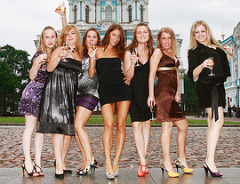
Russian women are also famous for being excellent housewives, great cooks and loving mothers. They usually learn since childhood how to cook traditional Russian meals and they love doing it. Besides, it's not very common to keep a housemaid in Russia. That's why Russian women are used to doing all housework themselves. These qualities of Russian women are highly valued by men in Russia and many other countries. In fact, there are many foreigners who are happy to have a Russian wife (рýсская женá), as well as there are many Russian girls who dream of marrying a man from abroad.
The reason behind this frame of mind is because Russian patriarchal traditions, which we have already mentioned above, also make men used to being the head of the family and, sometimes, men take for granted all the love and care that Russian women make available to them. The lack of respect from some Russian men is the reason for Russian women to seek a romantic partner abroad, hoping for a match who can provide for the family and care about the children.
On the other hand, foreign men tend to respect their love from abroad more and that makes their wives happier. Moreover it's always a great experience to build an intercultural family in which two people can interchange not only their personal experiences but also the heritage of their countries. But it is certainly more difficult and requests patience and respect from both husband and wife.
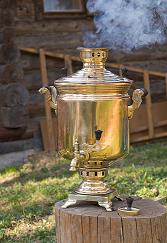
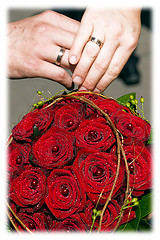


.jpg)






0 nhận xét:
Post a Comment